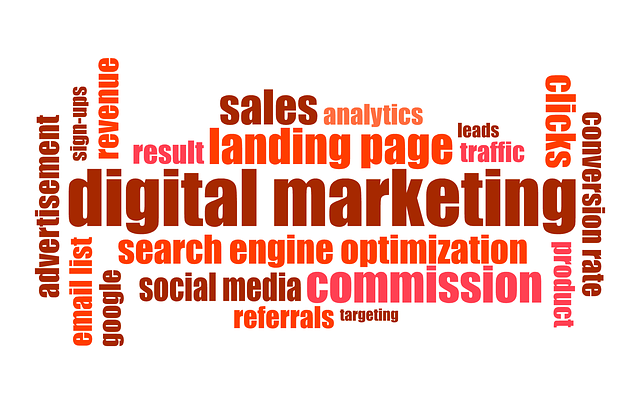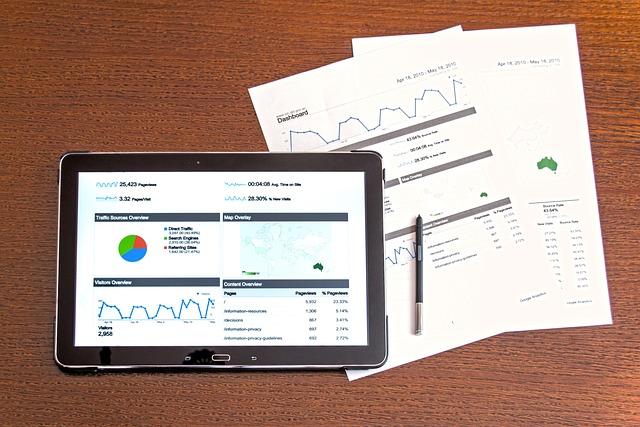MSF marketing success is multifaceted and relies on a comprehensive approach that encompasses tracking engagement metrics, such as likes, shares, comments, and reach, to understand audience preferences. Key performance indicators (KPIs) like click-through rates (CTR), conversion rates, lead generation, organic traffic, keyword rankings, and backlinks are critical for assessing content effectiveness and SEO performance in driving actionable outcomes. Additionally, customer retention is pivotal, with metrics like Net Promoter Score (NPS), client satisfaction surveys, churn rates, and issue resolution tracking essential for maintaining a high level of service quality and ensuring that MSP marketing strategies are aligned with customer needs for better long-term value and loyalty. Regular analysis of these data points allows MSPs to refine their content marketing efforts, optimize their online presence, and enhance their authority within the IT sector, ultimately leading to increased visibility and a stronger competitive position in the market.
navigating the digital landscape, measuring success in IT content marketing for MSPs hinges on a strategic approach that aligns with business objectives. This article delves into the pivotal metrics and analytical tools essential for gauging the effectiveness of your MSP marketing efforts. From understanding which metrics truly impact your strategy to analyzing traffic, user engagement, and lead generation, each section offers actionable insights tailored for MSPs. We’ll explore how to evaluate content quality, monitor social media performance, utilize SEO metrics, and measure customer retention and satisfaction, ensuring your MSP marketing not only reaches but resonates with your target audience.
- Understanding the Metrics that Matter for MSP Marketing
- Setting Clear Objectives for Your IT Content Marketing Strategy
- Analyzing Traffic and User Engagement for MSP Websites
- Evaluating Lead Generation and Conversion Rates in MSP Marketing Efforts
- Assessing the Quality and Impact of Content Produced by MSPs
- Monitoring Social Media Performance to Drive MSP Marketing Success
- Utilizing SEO Metrics to Gauge Content Marketing Effectiveness for IT Services
- Measuring Customer Retention and Satisfaction in Your MSP Marketing Approach
Understanding the Metrics that Matter for MSP Marketing

In the realm of MSP marketing, gauging the efficacy of content marketing efforts is pivotal for long-term success and growth. To this end, it’s crucial to focus on metrics that directly correlate with business objectives, rather than those that merely impress with their volume or variety. Key performance indicators (KPIs) should align with the MSP’s goals, whether they are brand awareness, lead generation, customer engagement, or sales conversions. Engagement metrics such as click-through rates (CTR), time on page, and social shares offer insights into how compelling your content is to your target audience. Additionally, tracking the number of leads generated from content assets and their conversion rates through the sales funnel provides a clear picture of content effectiveness in the lead generation phase.
Furthermore, MSPs should not overlook the importance of SEO metrics, as they are instrumental in understanding how well content is performing in search engine rankings. Metrics like organic traffic, keyword rankings, and backlinks contribute to a content strategy’s visibility and authority. By analyzing these metrics, MSPs can refine their content marketing approach to improve search engine performance, ensuring that their expertise is discovered by potential clients actively seeking IT solutions. Regularly reviewing these data points allows for informed decision-making and the optimization of both content strategy and overall marketing efforts for MSPs.
Setting Clear Objectives for Your IT Content Marketing Strategy

In the realm of IT content marketing, particularly for Managed Service Providers (MSPs), setting clear objectives is a cornerstone of success. These objectives should be SMART—Specific, Measurable, Achievable, Relevant, and Time-bound. By defining what you aim to achieve with your content, such as generating leads, establishing thought leadership, or improving brand recognition, MSPs can tailor their marketing strategies to align with these goals. For instance, if the objective is to attract new leads, the content should be designed to address the common pain points of potential clients and offer solutions through the MSP’s services. This targeted approach ensures that each piece of content contributes directly to the overarching objectives, thereby enhancing the effectiveness of the marketing efforts.
Furthermore, establishing key performance indicators (KPIs) that align with these objectives is essential for measuring success. KPIs could include metrics like website traffic, lead generation rates, conversion rates, or engagement levels on social media platforms. By consistently tracking and analyzing these metrics, MSPs can iterate their content marketing strategy to optimize performance, ensuring that their efforts are not only aligned with their set objectives but also yield tangible results in terms of business growth and client acquisition. This data-driven approach allows for the continuous refinement of IT content marketing strategies, making them more effective over time.
Analyzing Traffic and User Engagement for MSP Websites

In the realm of MSP marketing, analyzing traffic and user engagement is pivotal for the success of a website. By leveraging analytics tools, MSPs can track and assess the volume of visitors coming to their site, as well as the sources from which they originate. This data enables MSPs to refine their content strategy to attract more of their target audience. Moreover, understanding the behaviors of these visitors—such as which pages they spend time on, the actions they take, and the content that captures their attention—is crucial for tailoring content to enhance user engagement. Interactive elements like surveys, webinars, and downloadable resources can serve as effective tools to foster interaction and gather insights, providing MSPs with a deeper understanding of client needs and interests.
User engagement metrics extend beyond mere traffic figures; they encompass the depth of visitor involvement with the content. Metrics such as time spent on page, bounce rates, and social sharing statistics are indicators of how engaging the content is. By continuously monitoring these engagement factors, MSPs can identify which topics resonate most with their audience, allowing them to produce more relevant and valuable content marketing materials. Additionally, A/B testing different headlines, calls-to-action, and layouts can reveal what drives higher user interaction, leading to optimized website experiences that ultimately contribute to the growth of the MSP’s digital footprint and customer base.
Evaluating Lead Generation and Conversion Rates in MSP Marketing Efforts

In the realm of MSP marketing, evaluating lead generation and conversion rates is pivotal for the success of content marketing initiatives. The initial step in this process involves tracking the influx of new leads resulting from targeted content. By leveraging various channels such as blogs, social media, and email campaigns, MSPs can attract potential clients interested in their services. It’s not just about the quantity of leads but also their quality; MSPs must ensure that the generated leads are within their ideal customer profile, aligning with the specific industries or business sizes they aim to serve.
Once leads are captured, the focus shifts to conversion rates—a critical metric for assessing the effectiveness of an MSP’s marketing strategy. Conversion rate optimization requires a deep dive into the content’s performance in guiding prospects through the sales funnel. Tools like form submissions, contact requests, and downloads of valuable resources can serve as indicators of interest and engagement. Analyzing these interactions enables MSPs to refine their messaging and offers, ultimately transforming leads into clients. By continuously monitoring and optimizing for lead generation and conversion rates, MSPs can enhance their content marketing efforts, ensuring they resonate with the target audience and contribute to sustainable business growth.
Assessing the Quality and Impact of Content Produced by MSPs

In the realm of IT content marketing, particularly within managed service providers (MSPs), assessing the quality and impact of content is pivotal for gauging success and informing future strategies. High-quality content that resonates with the target audience can elevate an MSP’s position as a thought leader in the industry. Key performance indicators (KPIs) such as engagement rates, time spent on page, and social shares are valuable metrics for evaluating how well content connects with readers and addresses their pain points. Moreover, the effectiveness of content can be measured by its ability to drive leads and conversions, reflecting the content’s alignment with the MSP’s marketing funnel and sales objectives. Tracking these outcomes helps MSPs refine their messaging, improve content quality, and tailor their marketing efforts to better meet the needs of potential clients.
Furthermore, the impact of content produced by MSPs extends beyond direct engagement metrics. The consistency and relevance of technical expertise showcased through articles, videos, and infographics can position an MSP as a credible source of information, thereby fostering trust and authority within their niche. By leveraging SEO best practices and incorporating industry-specific keywords, such as ‘MSP marketing,’ into their content strategy, these providers can enhance their online visibility and attract a wider audience. This not only improves domain authority but also serves to demonstrate the MSP’s deep understanding of both technical challenges and business acumen, which is crucial for establishing long-term client relationships built on expertise and reliability.
Monitoring Social Media Performance to Drive MSP Marketing Success

To effectively measure IT content marketing success, particularly in Managed Service Provider (MSP) marketing, monitoring social media performance is a critical component. MSPs can leverage various analytics tools to track engagement metrics such as likes, shares, comments, and the overall reach of their content. By analyzing these metrics, MSPs gain insights into the types of content that resonate most with their audience, allowing for more targeted and effective content strategies. Additionally, tracking follower growth over time can indicate the success of content marketing efforts in expanding brand awareness within the IT sector.
Moreover, beyond vanity metrics, MSPs should focus on key performance indicators (KPIs) like click-through rates (CTR), conversion rates, and the number of leads generated from social media channels. These metrics directly correlate with the ultimate goal of content marketing: to drive actionable outcomes. By regularly reviewing these KPIs, MSPs can refine their social media tactics, optimize their campaigns for better performance, and ultimately achieve a higher return on investment (ROI) for their content marketing initiatives. This data-driven approach ensures that MSPs remain agile in their marketing strategies, adapting to the evolving digital landscape and the needs of their audience.
Utilizing SEO Metrics to Gauge Content Marketing Effectiveness for IT Services

In the realm of IT services, MSP marketing hinges significantly on content that resonates with the target audience and search engines alike. To gauge the effectiveness of this content marketing strategy, utilizing SEO metrics is paramount. These metrics provide insights into how well your content is performing in terms of visibility and engagement on search engine results pages (SERPs). Key performance indicators (KPIs) such as keyword rankings, organic traffic, click-through rates (CTR), and bounce rates offer a clear view of content relevance and its ability to attract and retain users. Regularly monitoring these metrics allows MSPs to refine their content strategy, ensuring that the topics covered are those that potential clients are actively searching for. By aligning content with SEO trends and search intent, IT service providers can enhance their online presence, thereby improving their chances of capturing leads and converting them into long-term clients.
Furthermore, a deep analysis of backlink profiles can also be instrumental in measuring content marketing success. The number and quality of backlinks pointing to your content are indicative of its authoritativeness and trustworthiness within the industry. High-quality backlinks from reputable sites can significantly boost domain authority and search engine rankings, making it easier for potential clients to discover your MSP’s services. It’s crucial to track not only the volume of backlinks but also their relevance to the IT sector. This approach ensures that the content is not only reaching a wider audience but is also being recognized as a valuable resource by industry peers, which further solidifies the MSP’s position as an authority in the field of IT services.
Measuring Customer Retention and Satisfaction in Your MSP Marketing Approach

In the realm of Managed Service Providers (MSPs), customer retention and satisfaction are pivotal indicators of success in marketing efforts. To effectively gauge these aspects within an MSP’s marketing strategy, it is imperative to employ a variety of metrics that capture the nuances of client engagement and experience over time. Utilizing tools like Net Promoter Score (NPS) can provide insights into customer loyalty and likelihood of referrals, which are critical for organic growth. Surveys and feedback mechanisms offer direct channels through which MSPs can measure satisfaction levels by assessing clients’ perceptions of service quality, issue resolution, and overall value provided. Monitoring churn rates and the reasons behind client departures further illuminates retention challenges, enabling MSPs to tailor their marketing approaches to address underlying issues and enhance customer lifetime value. By analyzing these data points, MSPs can fine-tune their marketing efforts to not only retain existing customers but also foster a positive reputation that attracts new clients.
Furthermore, the integration of content marketing into the broader MSP marketing strategy plays a significant role in influencing customer retention and satisfaction. Content such as blogs, whitepapers, and case studies should be crafted not only to showcase expertise but also to demonstrate an understanding of customers’ unique challenges and how the MSP’s services can resolve them. By aligning content with customer pain points, MSPs can enhance their relevance and value proposition in the eyes of their audience. Tracking engagement metrics, such as time spent on content, download rates, and social media interactions, provides a quantitative measure of content effectiveness and its impact on customer satisfaction and loyalty. Regularly reviewing these metrics allows for agile adjustments to content themes, formats, and distribution channels to better align with customer preferences and enhance the overall marketing approach.
In conclusion, measuring the success of IT content marketing for Managed Service Providers (MSPs) hinges on a multifaceted approach that encompasses various key performance indicators. By setting clear objectives and understanding the metrics that truly matter, MSPs can tailor their strategies to not only attract but also engage and convert leads effectively. Regularly analyzing website traffic, assessing content quality, monitoring social media engagement, and utilizing SEO metrics are all critical components of a robust content marketing strategy. Moreover, tracking customer retention and satisfaction ensures that the MSP’s marketing efforts align with client needs and foster long-term relationships. Integrating these practices into your MSP marketing plan will provide valuable insights to enhance performance and achieve measurable success in the competitive IT landscape.
